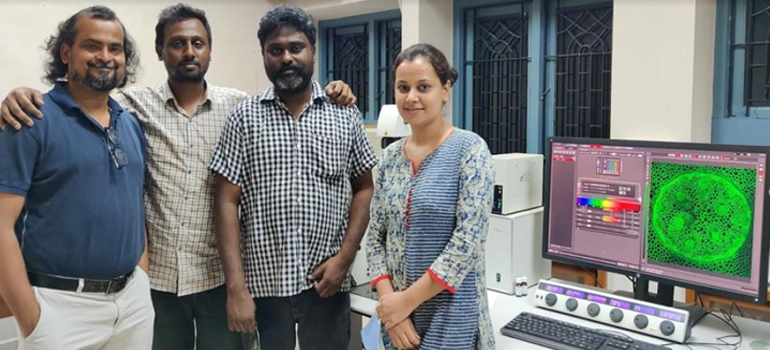
A research team from the Indian Institute of Technology, Madras, has synthesized a white light emitting crystal in the laboratory that can be used for energy saving and long-lasting LED (light emitting diode) lights and display. The team synthesized a crystalline material called halide-perovskites, which emitted an intense white light when its structure was distorted.
“It was not a random synthesis. We did it with selective atomic precision. While synthesizing, we added specific composition of atoms inside and introduced distortion, which led to the emission of intense white light,” said Prof Aravind Kumar Chandiran, department of chemical engineering, who led the research team along with Prof Ranjit Kumar Nanda B from the department of physics.
“This indigenously developed bright white light emitter can potentially replace the conventional highcost material and phenomenally save the energy cost per lumens,” he added.
According to the researchers, halide-perovskites have extraordinary optoelectronic (light-emitting) properties and high light-tocurrent conversion efficiencies. The researchers said the distorted perovskite can be used independently as a white light
emitter or as a phosphor, a solid material that emits light, in combination with blue LEDs to produce white light.
The distorted material also showed high stability under ambient conditions. The emission of intense light and stability make them useful in long-lasting, energy-saving lighting applications. Besides general lighting, white LEDs can be used in liquid
crystal display backlights, display mobile lighting, and medical and communication equipment.
Energy-efficient LEDs, which replaced energy-inefficient incandescent lamps, are available in almost all colours, but white LEDS are a recent development where specialised techniques were used to produce white light. Blue LED is coated with yellow phosphor, a light emitting solid material, and blue, green and red LEDs are combined to produce white light. The use of such indirect techniques can cause a loss of efficiency forcing researchers to look for material that can directly emit white light.
The innovation, which has been patented, recently received the Government of India’s SERB-Technology Translation Award and the team plans to use the grant money of a‚¹30 lakh to produce LEDs using the distorted perovskite material. Along with
publishing their research work, the team also proposed a design strategy for scientists to develop white light emitters.
Original News Link
https://www.iitm.ac.in/happenings/press-releases-and-coverages/iit-madras-team-makes-white-light-emitting-crystal-lab